Discover the vibrant beauty of Bougainvillea Plant — a stunning tropical plant that blends aesthetic charm with spiritual depth.
In this BTA Feng Shui guide, learn how to care for Bougainvillea, understand its Feng Shui significance, and grow it to attract harmony, prosperity, and positive energy to your space.
Unveiling the Charm of Bougainvillea
The bougainvillea plant, also known as the paper flower, is a vibrant tropical ornamental prized for its brilliant colors and vigorous growth. Native to South America, bougainvillea is widely loved for its striking appearance and minimal care requirements.
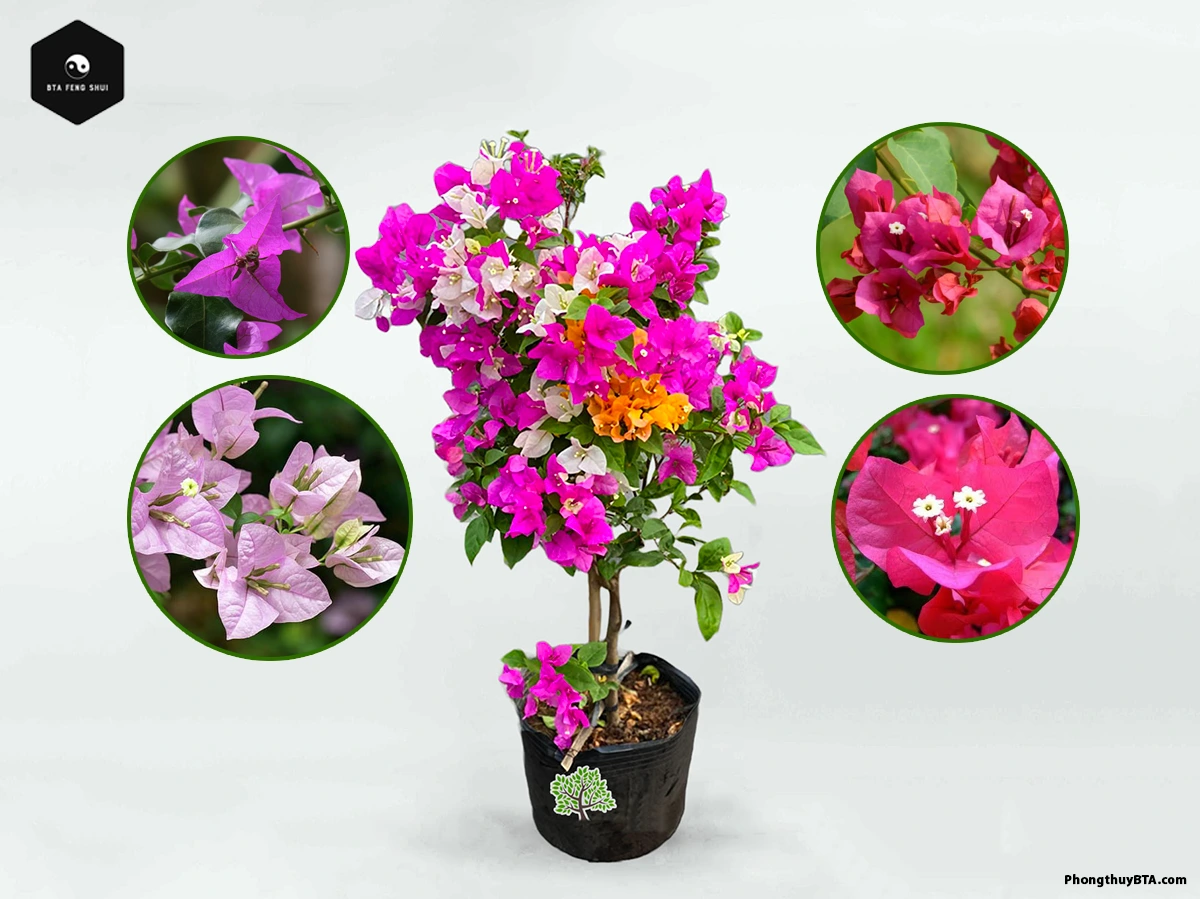
Interestingly, the vivid “flowers” of bougainvillea are not actual petals, but bracts—papery, colorful leaves that surround the plant’s tiny, tubular true flowers. These bracts come in a stunning variety of colors, including pink, red, orange, purple, yellow, and white. Some cultivars even showcase dual colors or shift shades over time.
Key Characteristics
- Common Names: Bougainvillea, bugambilia, paper flower, veranera, trinitaria, santa rita.
- Scientific Name: Bougainvillea (includes species like B. spectabilis, B. glabra, B. peruviana).
- Origin: Mexico, Brazil, Bolivia, Paraguay, Peru, Argentina.
- Appearance: Grows 3–39 feet tall, with spiky thorns, heart-shaped leaves, and colorful bracts surrounding small white or yellow flowers.
- Blooming season: Year-round, with peak flowering during dry periods
- Growth Habit: Can be trained as a vine, shrub, tree, or bonsai; evergreen in year-round rainfall or deciduous in dry seasons.
- Varieties: Over 300 cultivars, including hybrids like Purple Queen, Barbara Karst, and Rosenka, with colors ranging from bougainvillea pink to golden yellow.
- Symbolism: Good fortune, perseverance, and a strong will to grow
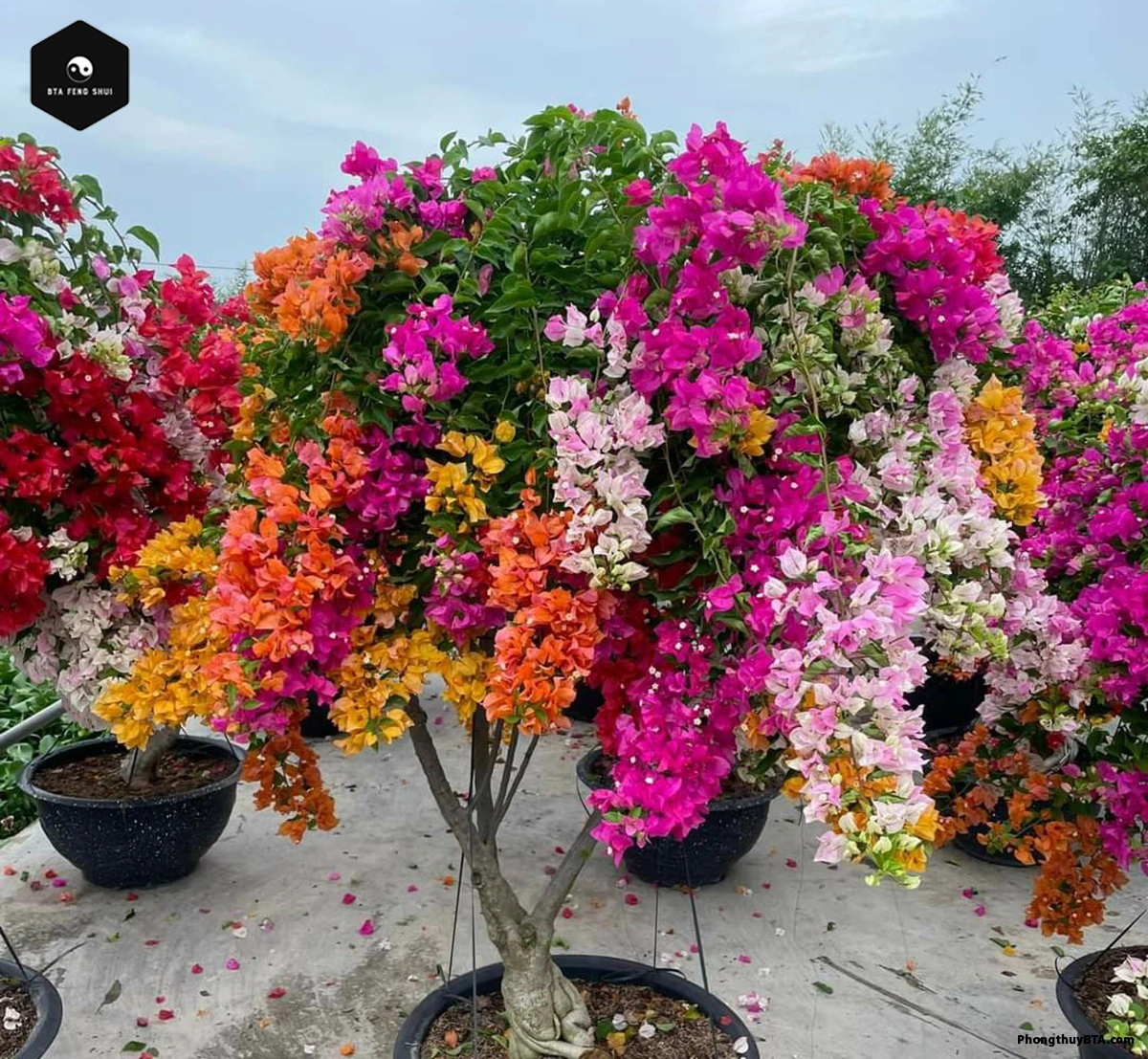
Notable Species
- Bougainvillea spectabilis: Large, vibrant bracts; vigorous growth; ideal for dramatic displays.
- Bougainvillea glabra: Glossy leaves; compact growth; perfect for containers or small gardens.
- Bougainvillea peruviana: Smaller bracts; slower growth; suits natural, low-maintenance landscapes.
- Hybrids: Cultivars like Oo-La-La and Burgundy Queen offer unique colors and forms.
Bougainvillea’s versatility makes it a favorite for bougainvillea climbing vines, hedges, or container plants, thriving in USDA Hardiness Zones 9–11 or as an annual in cooler regions.
Feng Shui Significance of Bougainvillea
In Feng Shui, the bougainvillea flower is a powerful symbol of protection, prosperity, and emotional harmony. Its vibrant colors and robust growth channel positive chi, making it a must-have for spiritual gardens.
Spiritual Benefits
- Protection: The thorny branches of bougainvillea plants act as a natural barrier, warding off negative energy and safeguarding your home.
- Prosperity: Lush, colorful bracts symbolize abundance, attracting wealth and success.
- Emotional Harmony: The plant fosters love and unity, strengthening family bonds and romantic relationships.
- Creativity: Bright bougainvillea colors inspire joy, optimism, and creative energy.
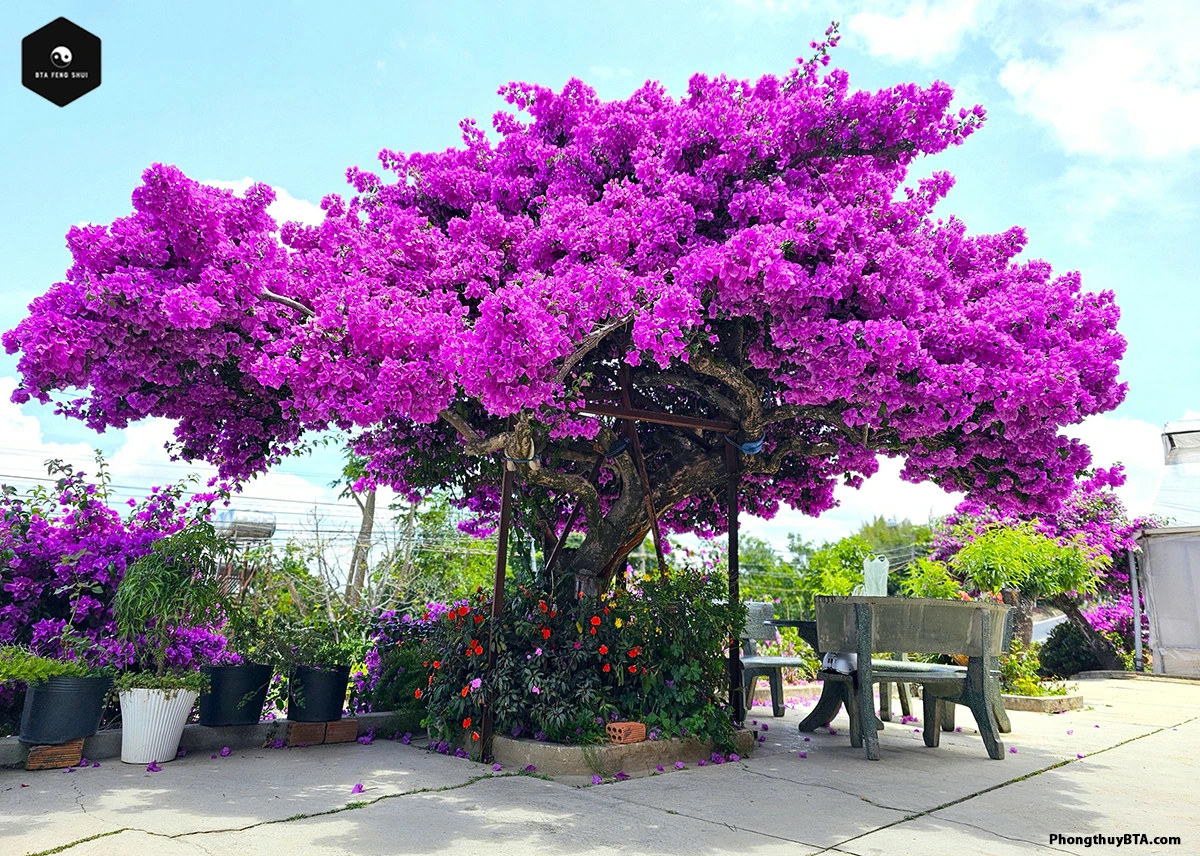
Color Symbolism
- Red/Pink Bougainvillea: Represents passion, love, and career success; ideal for Huo (Fire) element enthusiasts.
- Purple Bougainvillea: Symbolizes loyalty, luxury, and spiritual growth; suits Shui (Water) element.
- White Bougainvillea: Signifies purity and new beginnings; aligns with Jin (Metal) element.
- Yellow/Orange Bougainvillea: Evokes wealth and optimism; perfect for Tu (Earth) element.
Planting bougainvillea in strategic locations enhances its Feng Shui benefits, harmonizing energy flow and elevating your space’s vibrancy.
Mastering Bougainvillea Care
Proper care for bougainvillea ensures it thrives, amplifying its Feng Shui benefits. Follow these expert tips to cultivate a healthy, blooming plant.
Propagation
- Method: Use tip cuttings (6–8 inches) from healthy stems. Remove lower leaves, dip in rooting hormone, and plant in well-draining soil.
- Timing: Spring or early summer for optimal rooting.
- Tips: Keep cuttings moist but not soggy; place in indirect light until roots develop (2–4 weeks).
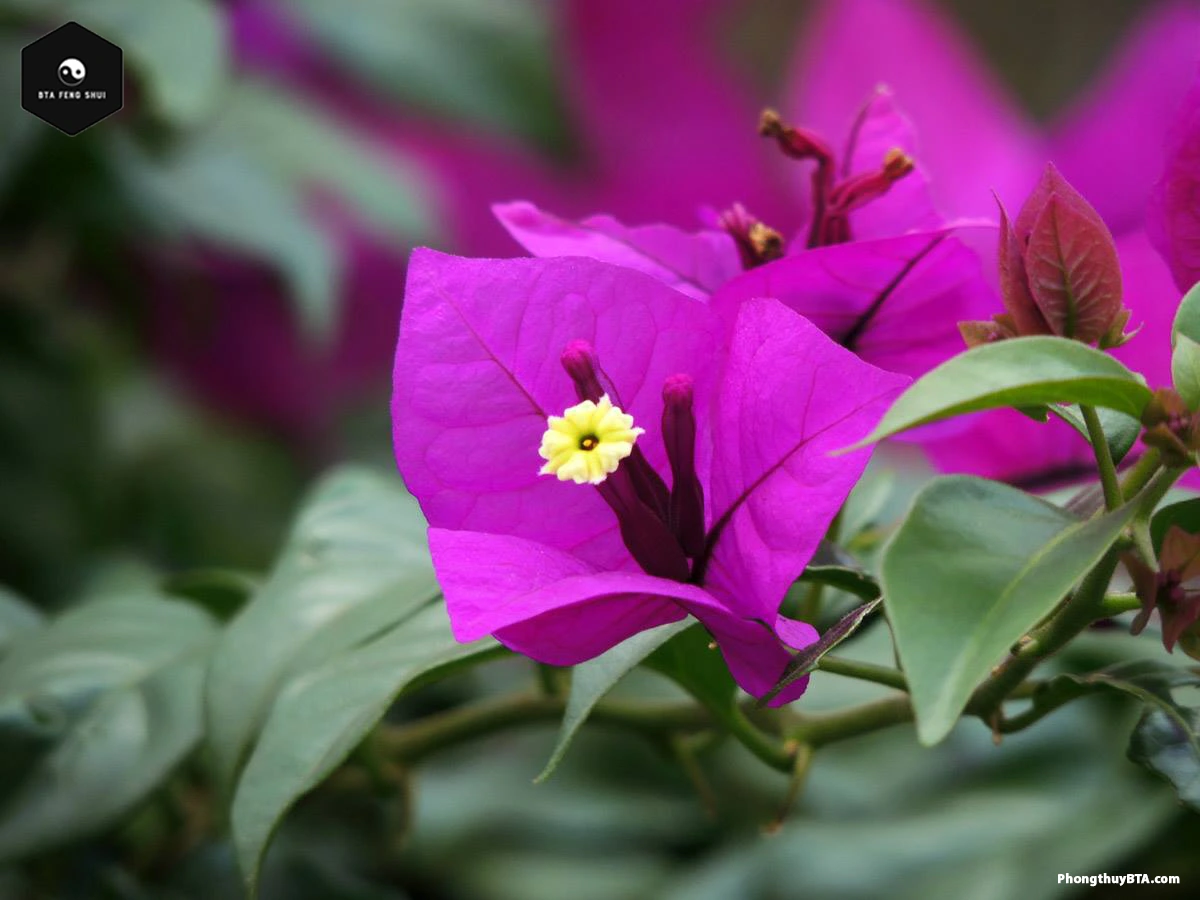
Soil and Planting
- Soil: Use well-draining, slightly acidic soil (pH 5.5–6.5) mixed with compost or sand. For containers, choose a quality potting mix.
- Planting: Dig a hole twice the root ball’s width, loosen roots, and plant in spring or early summer. Add mulch to retain moisture.
- Hydroponics: Not suitable for bougainvillea cultivation due to its preference for dry conditions.
Sunlight
- Requirement: Full sun (6+ hours daily) for vibrant bougainvillea flowering.
- Tips: Place in south-facing spots or near reflective surfaces to maximize light exposure.
Watering
- Frequency: Water deeply during establishment (1–2 years), then reduce to 1–2 times weekly. Allow soil to dry slightly between waterings.
- Winter Care: Minimize watering to prevent root rot, especially in cooler climates.
Temperature and Humidity
- Ideal Range: 60–100°F; frost-sensitive (protect below 32°F).
- Humidity: Prefers moderate humidity; thrives in dry, warm climates.
- Winter Tips: In Zones 9 or below, use frost cloths or bring potted plants indoors.
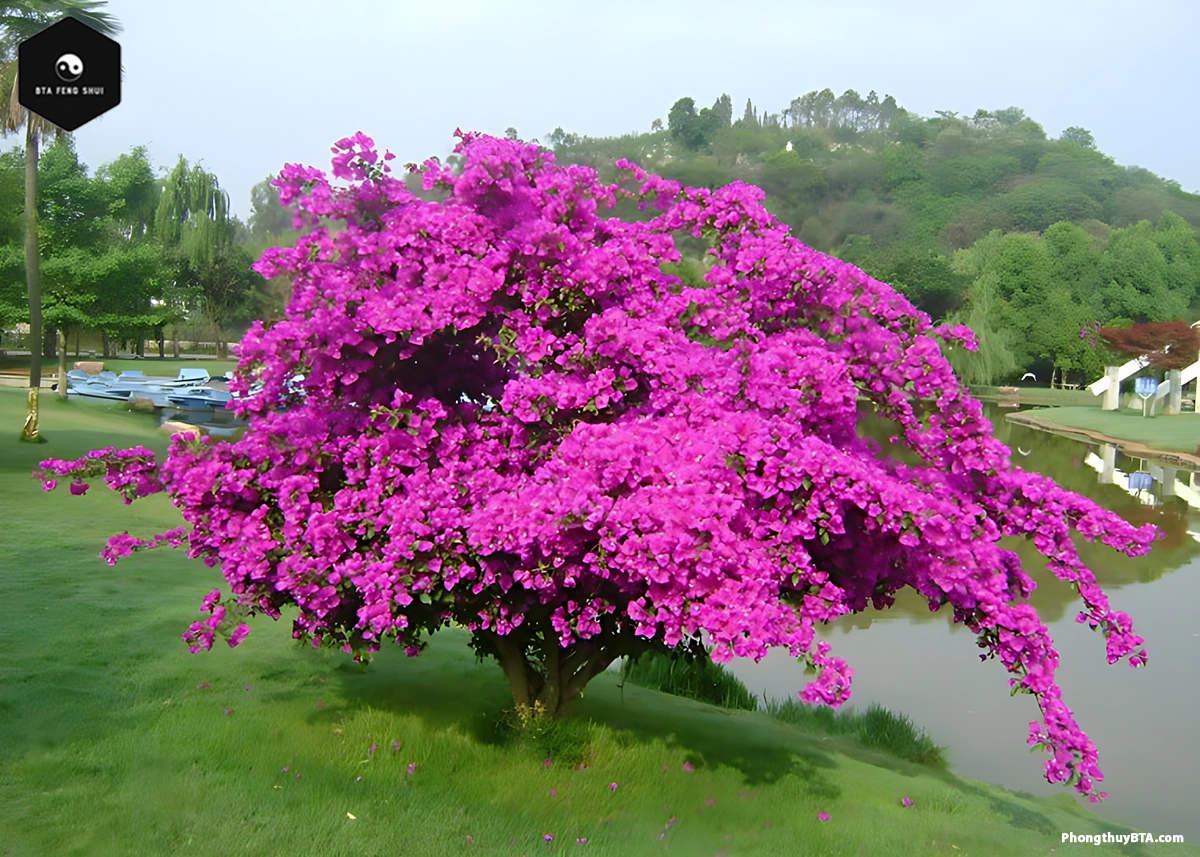
Fertilizing
- Type: Use balanced, slow-release fertilizer (e.g., 10-10-10) or bougainvillea-specific formulas low in nitrogen.
- Schedule: Apply monthly during the growing season (spring–summer); avoid winter fertilization.
Pruning
- Timing: Late winter or early spring to encourage new growth and bougainvillea blooming season.
- Method: Use sharp shears to remove dead or damaged branches; trim tips to shape. Wear gloves to avoid thorns.
- Tips: Hard pruning promotes vigorous growth; train vines on trellises for Feng Shui placement.
Repotting
- Frequency: Every 2–3 years for potted bougainvillea plants or when roots are crowded.
- Method: Choose a pot with drainage holes, refresh soil, and prune roots lightly if needed.
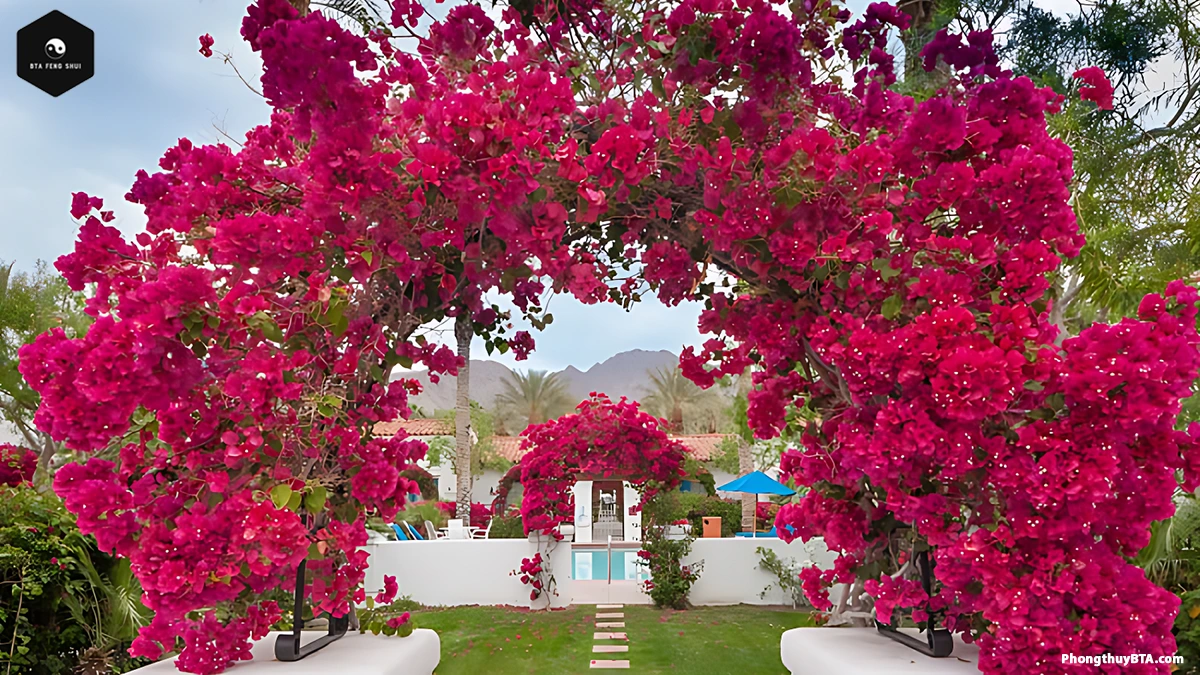
Pests and Diseases
- Common Pests: Aphids, mealybugs, and worms. Treat with insecticidal soap or prune affected areas.
- Diseases: Root rot from overwatering; fungal issues from wet foliage. Water early in the day and ensure good drainage.
- Prevention: Monitor regularly and maintain proper bougainvillea plant care to minimize issues.
Additional Benefits of Bougainvillea
Beyond Feng Shui, bougainvillea plants offer practical advantages:
- Air Purification: Green leaves filter pollutants, improving air quality.
- Aesthetic Appeal: Enhances gardens, patios, or balconies with vibrant bougainvillea colors.
- Drought Tolerance: Ideal for low-water landscapes, reducing maintenance costs.
- Pollinator-Friendly: Attracts bees and butterflies, supporting local ecosystems.
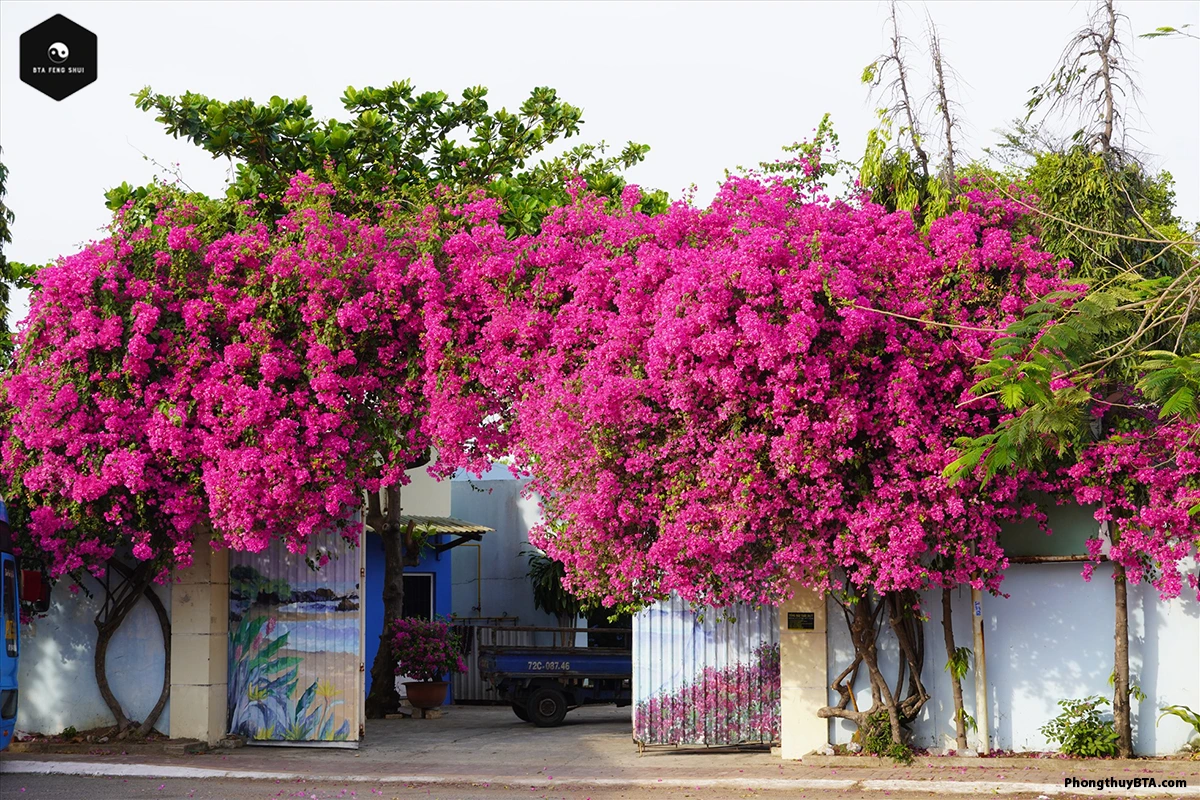
Read more:
- English Ivy Care: The Secret to a Healthier, Luckier Home
- How to Grow and Care for Hydrangeas in Feng Shui Gardens
Frequently Asked Questions About Bougainvillea
How to Grow Bougainvillea in Pots?
Choose a pot with drainage holes, use well-draining soil, and place in full sun. Water sparingly, allowing soil to dry between waterings, and fertilize monthly during the growing season.
When Does Bougainvillea Bloom?
Bougainvillea flowering season typically spans spring to fall in warm climates, with cycles of 4–6 weeks. Ensure full sun and avoid overwatering to promote blooms.
Is Bougainvillea a Perennial?
Yes, bougainvillea is a perennial in USDA Zones 9–11. In colder zones, it’s grown as an annual or brought indoors during winter.
How Fast Do Bougainvillea Grow?
Growth rate varies by variety; some bougainvillea vines can grow up to 40 feet with support, while dwarf cultivars stay compact. Expect rapid growth in ideal conditions.
How to Prune Bougainvillea Plant?
Prune in late winter or early spring using sharp shears. Remove dead branches and trim tips to shape, encouraging new growth and vibrant bougainvillea flowers.
Does Bougainvillea Need Full Sun?
Yes, bougainvillea requires at least 6 hours of direct sunlight daily to thrive and produce abundant bracts.
Found this guide helpful? Rate us 5 stars and share it with fellow garden enthusiasts to spread the beauty and wisdom of bougainvillea in Feng Shui!
























